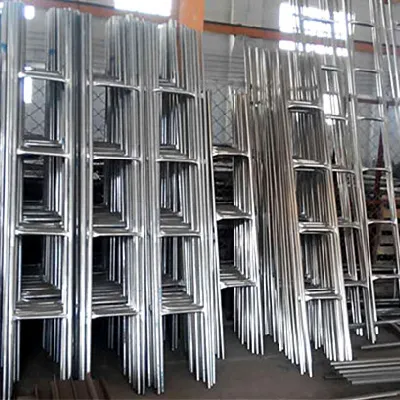loading...
- No. 9, Xingyuan South Street, Dongwaihuan Road, Zaoqiang County, Hengshui, Hebei, China
- admin@zjcomposites.com
- +86 15097380338
- Welcome to visit our website!
Exploring the Benefits and Applications of FRP Decking for Durable Outdoor Spaces
The Benefits and Advantages of FRP Decking
Fiber Reinforced Polymer (FRP) decking has emerged as a revolutionary material choice for various construction and infrastructure applications. With its remarkable properties and numerous benefits, it is quickly becoming the preferred choice for architects, engineers, and builders alike. This article will explore what FRP decking is, its advantages, applications, and why it stands out as an optimal solution in today’s construction practices.
What is FRP Decking?
FRP decking is made from a composite material that combines a polymer matrix with glass, carbon, or aramid fibers, which lend it exceptional strength and durability. This combination results in a lightweight yet strong material, ideal for a variety of applications, particularly in environments where corrosion resistance, low maintenance, and structural integrity are critical.
Key Advantages of FRP Decking
1. Corrosion Resistance One of the standout features of FRP decking is its resistance to corrosion. Unlike traditional materials such as wood or steel, FRP does not rust or rot. This characteristic makes it ideal for use in harsh environments, including water treatment facilities, chemical plants, and coastal construction projects.
2. Lightweight and Easy to Install FRP decking is considerably lighter than traditional materials, making it easier to handle and install. This feature not only reduces transportation costs but also minimizes the labor required for installation. Builders can achieve quicker project turnaround times without sacrificing quality.
3. High Strength-to-Weight Ratio Despite its lightweight nature, FRP decking boasts a high strength-to-weight ratio. It can support substantial loads while maintaining its integrity, making it a reliable choice for various structural applications, including bridges, walkways, and platforms.
frp decking

4. Low Maintenance Costs FRP decking requires minimal maintenance compared to wood or metal alternatives. It does not need to be painted, treated, or resurfaced, and its inherent durability means it can withstand years of wear and tear with little upkeep. This aspect translates to significant long-term cost savings for property owners.
5. Versatility of Design The manufacturing process of FRP allows for various shapes, sizes, and colors, affording architects and designers the flexibility to create innovative and aesthetically pleasing structures. This versatility enables the integration of FRP decking into a wide range of architectural designs and settings.
6. Fire Resistance Depending on the specific polymer used, some FRP deckings also exhibit fire-resistant properties. This aspect is crucial in applications where fire safety codes and regulations are stringent, such as in public buildings, airports, and industrial facilities.
Applications of FRP Decking
FRP decking finds applications across diverse industries due to its unique properties. Some common uses include
- Bridges Many municipalities are turning to FRP for pedestrian bridges due to its lightweight nature and excellent load-bearing capacity. - Marine Structures FRP is often used in docks, piers, and boardwalks, where it can withstand the harsh marine environment without deteriorating. - Industrial Flooring Factories and processing plants benefit from FRP decking as it can resist chemical exposure and heavy foot traffic. - Roof Systems FRP panels can be utilized in roofing systems, providing a lightweight and durable alternative that allows for effective drainage.
Conclusion
In summary, FRP decking represents a significant advancement in construction material technology. Its combination of lightweight, strength, corrosion resistance, and low maintenance requirements makes it an excellent choice for various applications. As industries continue to seek sustainable and innovative solutions, FRP decking stands out as a forward-thinking option that meets the evolving demands of modern construction while delivering long-lasting performance. Embracing this material can lead to improved efficiencies, reduced costs, and more durable structures, ultimately enhancing the value of any project.
-
The Rise of FRP Profiles: Strong, Lightweight, and Built to LastNewsJul.14,2025
-
SMC Panel Tanks: A Modern Water Storage Solution for All EnvironmentsNewsJul.14,2025
-
GRP Grating: A Modern Solution for Safe and Durable Access SystemsNewsJul.14,2025
-
Galvanized Steel Water Tanks: Durable, Reliable, and Ready for UseNewsJul.14,2025
-
FRP Mini Mesh Grating: The Safer, Smarter Flooring SolutionNewsJul.14,2025
-
Exploring FRP Vessels: Durable Solutions for Modern Fluid HandlingNewsJul.14,2025
-
GRP Structures: The Future of Lightweight, High-Performance EngineeringNewsJun.20,2025
